BIS Certification for Flush Bolts under IS 5187
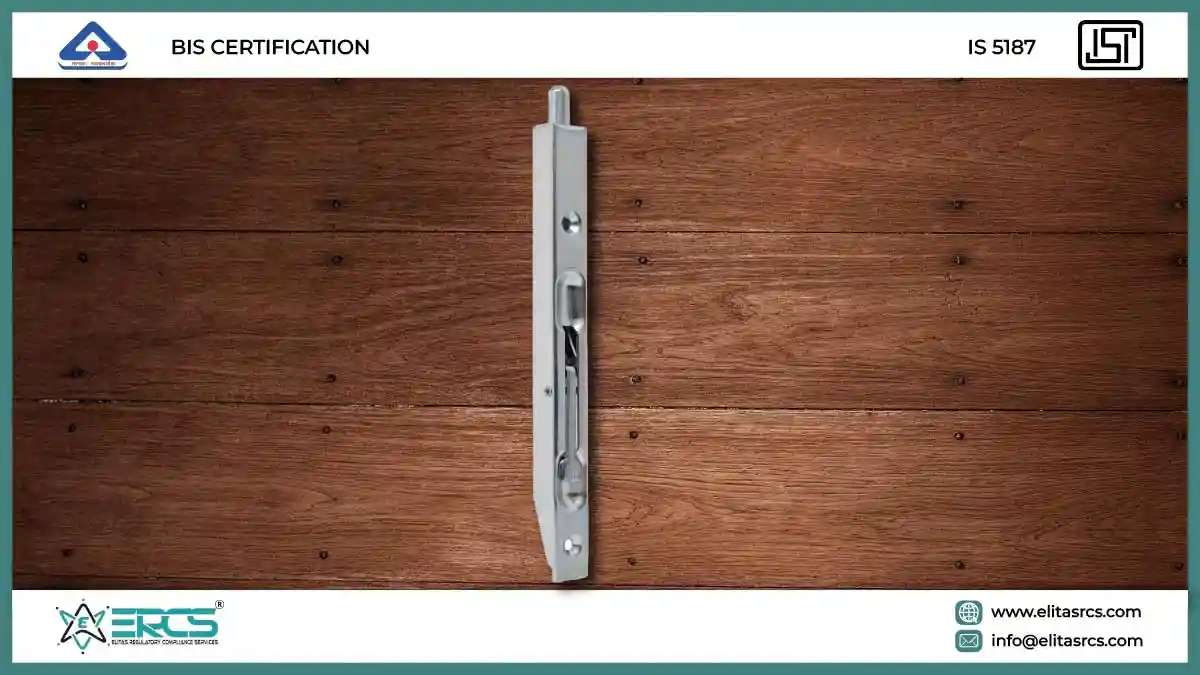
BIS CERTIFICATION FOR FLUSH BOLTS IS 5187:1972
Flush bolts are installed into the lock stile on the inactive leaf of a pair of doors. There are often two bolts, one installed at the top and one at the bottom of the door. The strike of the top bolt will be in the head of the frame and the strike for the bottom bolt will be in the floor. Other door hardware used on the opening must be compatible with the type of flush bolts you use. Building codes and life safety requirements may also restrict the type of flush bolts you can use.
Manual flush bolts require a person to manually retract the bolts by flipping a small lever that pulls the bolt in. The bolt is held retracted until a person manually re-latches the door by moving the small lever to extend the bolt into the strike.
Self-latching flush bolts are often called constant latching flush bolts. These bolts are a combination of the manual extension flush bolts and automatic latching flush bolts. The top bolt must be manually retracted by a push-button or slide in order to open. However, unlike the manual flush bolts that holds the bolt retracted, the constant latching bolt is spring-loaded and projects itself back out when the slide or push-button is released.
Automatic flush bolts are projected and retracted without any manual operation required. When the active leaf is opened, the flush bolts are retracted, allowing the inactive door to open. When the active leaf is closed, the flush bolts are automatically latched again.
BIS is a statutory institution established under the Bureau of Indian Standards Act,1986 to promote harmonious development of the activities of standardization, marking and quality certification of goods and attending to connected matters in the country.
Flush Bolts product has been specified in IS 5187 : 1972 by Bureau of Indian Standards.
This standard (First Revision) lays down the requirements for flush bolts for use in cupboards and doors.
References
IS 2 : 1960 Rules for rounding off numerical values
IS 1378 : 1967 Specification for oxidized-copper finishes
IS 1868 : 1968 Specification for anodic coatings on aluminium
IS 4827 : 1968 Specification for electroplated coatings of nickel and chromium on copper and copper alloys
Raw Materials :
· Cast Brass for Body, Plate and Bolt- as per IS 292
· Cast Aluminum Alloy for Body and Plate - as per IS 617
· Extruded Aluminum Alloy for Body, plate and Bolt- as per IS 733
· Extruded Brass for Bolt - as per IS 319
· Steel strip for Spring- as per IS 2507
·
Note: Manufacturers
should check for the latest applicable cross
referred Indian Standards on raw material and test
methods with BIS
Possible Tests in a day :
All tests
Following are the Testing Parameters :
· Raw Material
· Manufacture and Construction
· Dimensions
· Workmanship and Finish
· Thickness
· Quality of Sealing
· Colour and Appearances
· Corrosion Resistance
· Abrasion resistance, if required by purchaser
· Resistance to crazing by deformation
· Fastness to light
· Light reflection properties
· Electrical breakdown potential, if required by purchaser
BIS Certification in India
It is always better to consult with experience team such as ERCS Pvt. Ltd. for smooth certification process.
For more information, please feel free to contact us at info@elitasrcs.com or call at +91-9076611770 / +91-9076611766.
Share:
Article Categories
Latest Blogs
-
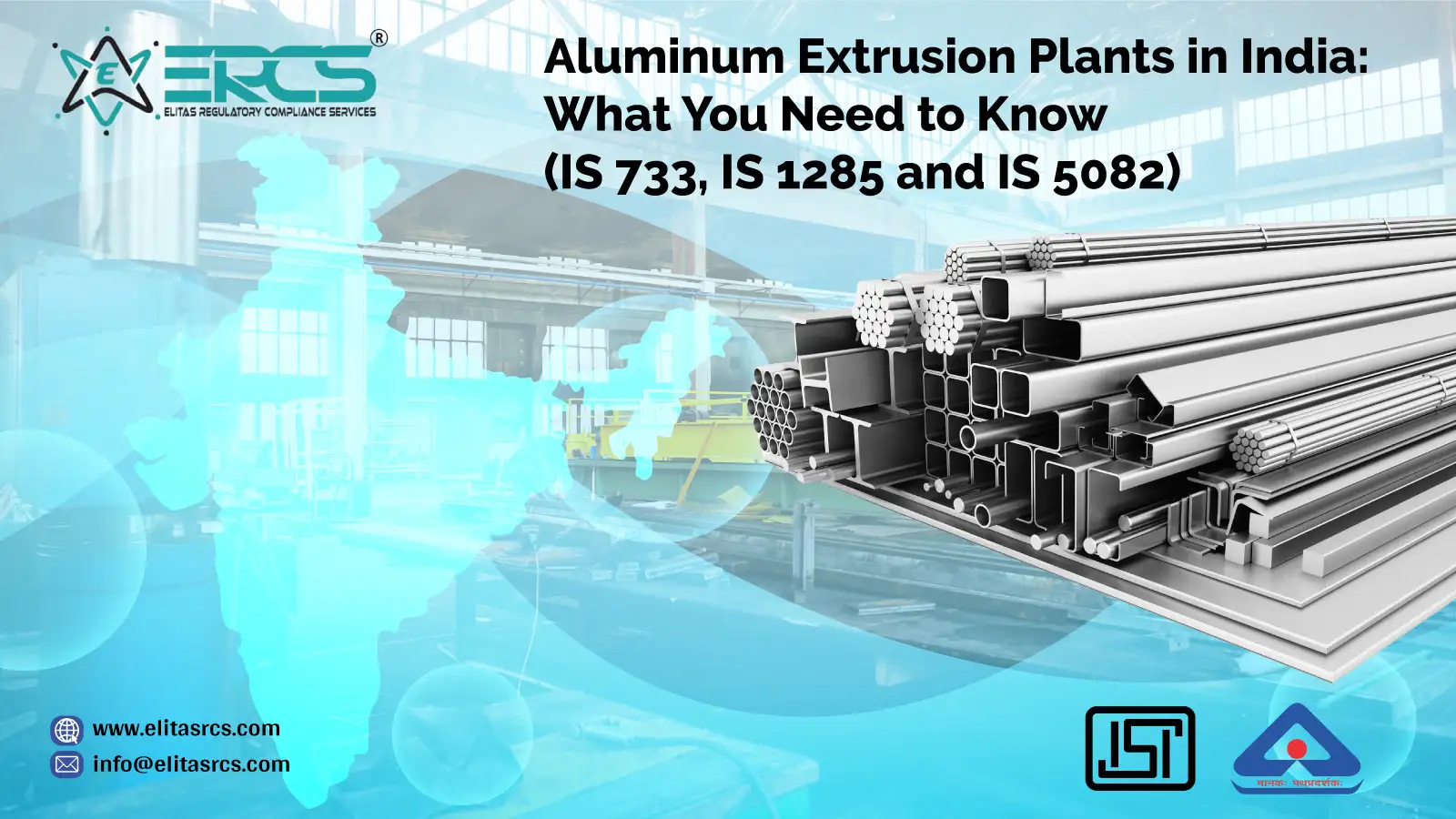
-
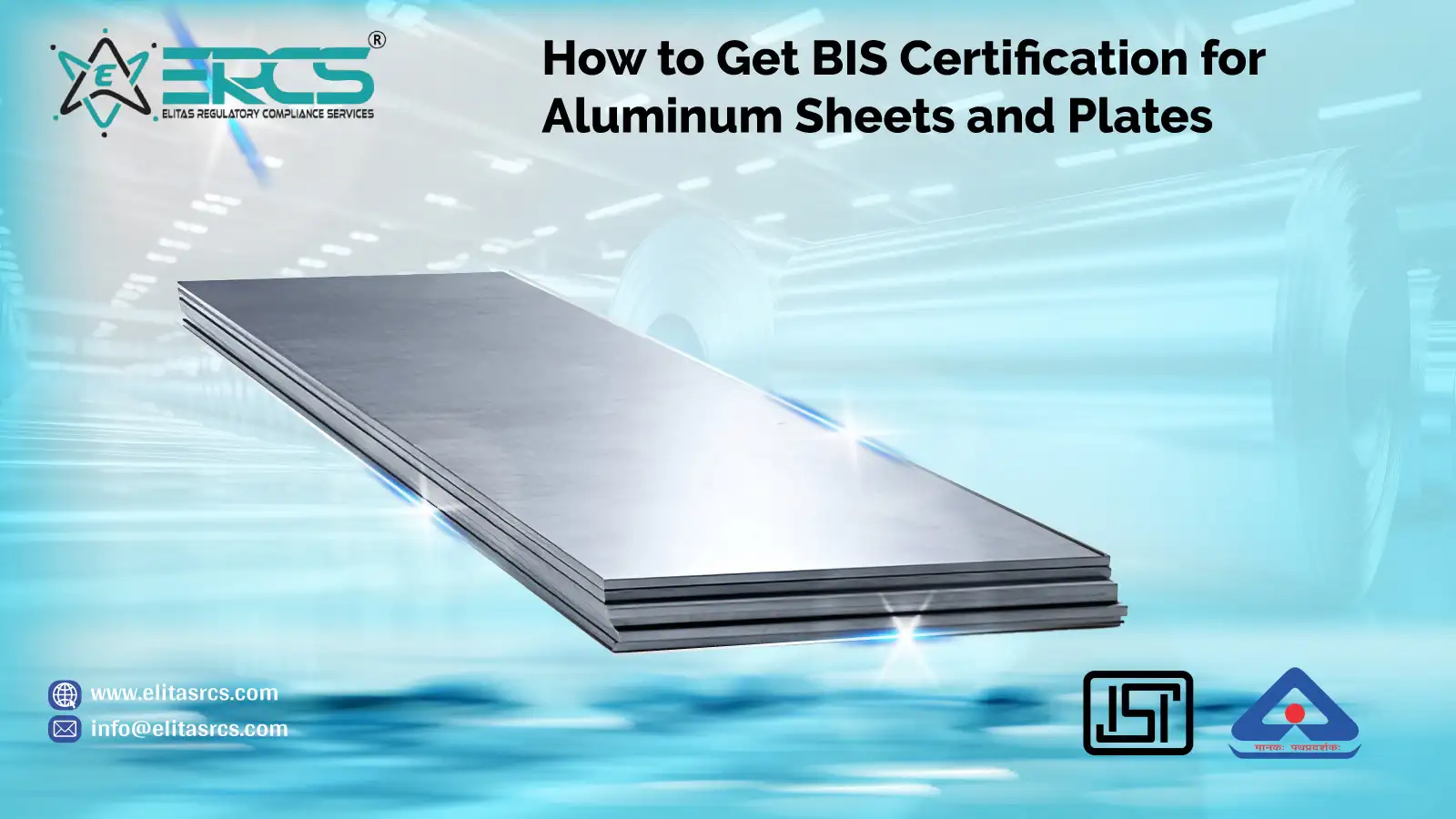
-
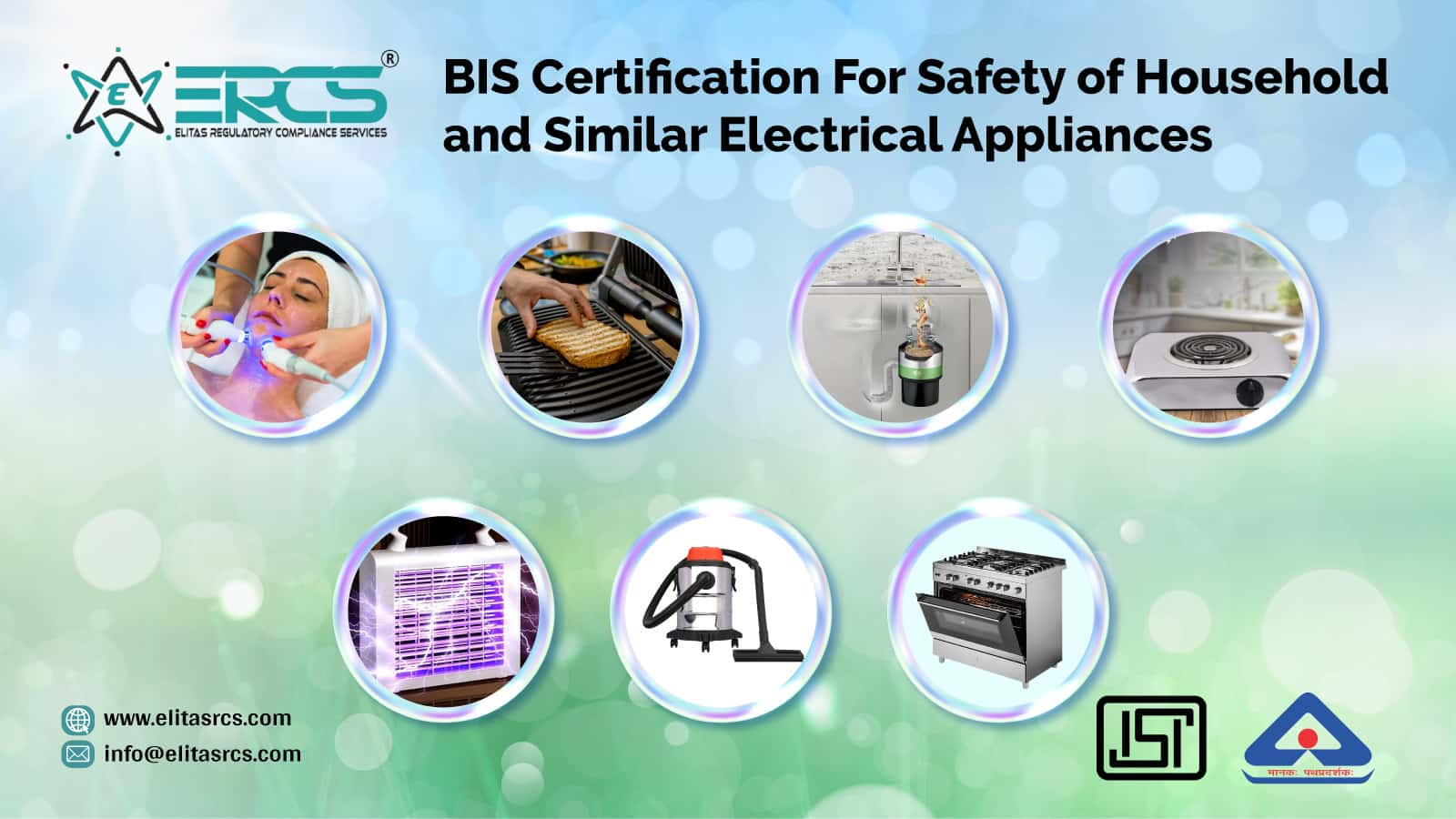
-

15 Oct, 2024 BIS Certification for Polyurethane IS 17397 (Part 1)
-
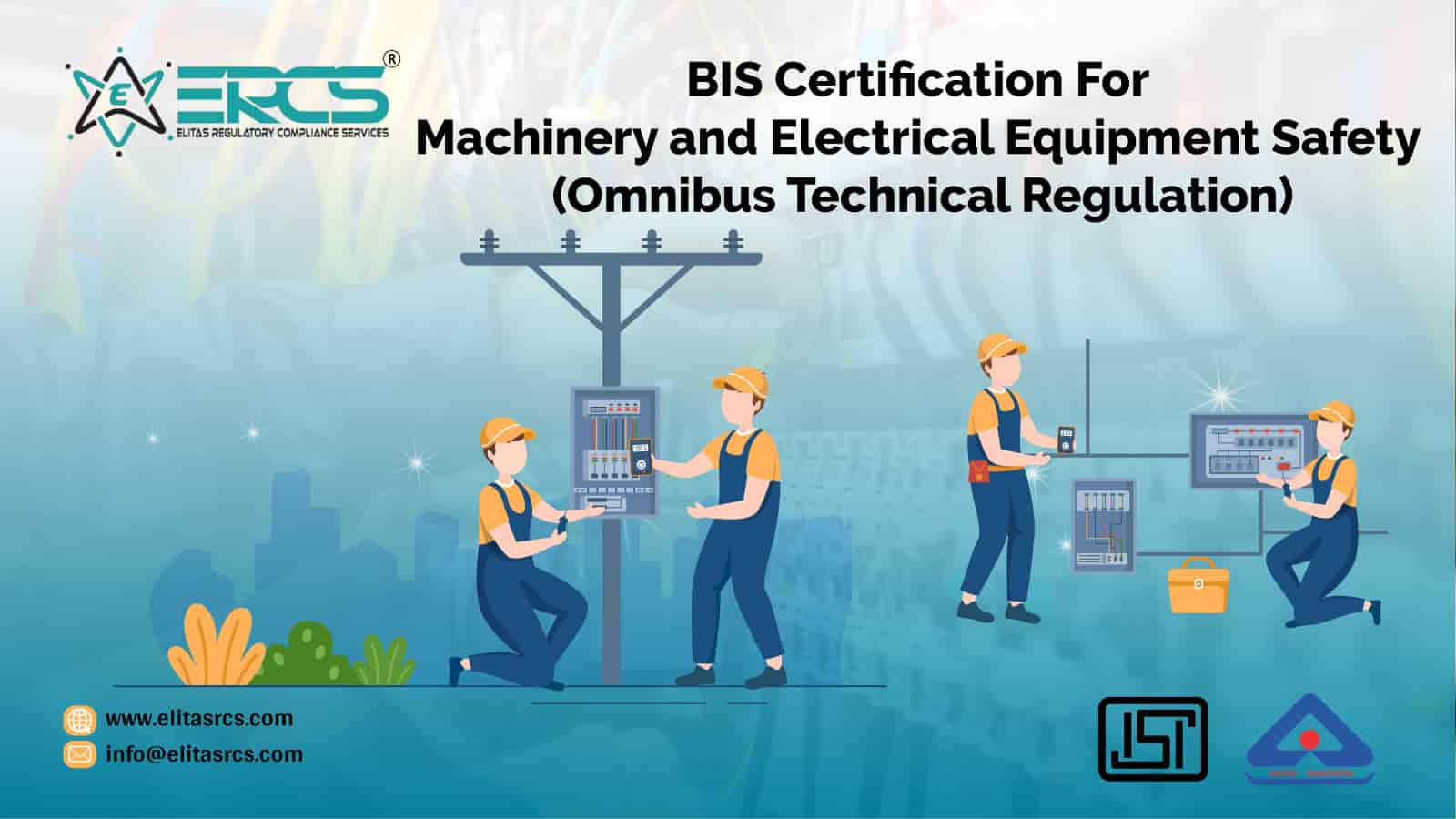
Need Expert Advice?
Feel Free to Connect with Us
Prompt reply within hours
Continued support
Experience Consultants at ERCS are ready to assist you at every step of compliance so as to provide you the best services in India. Get complete information about the certification that your product need to enter in Indian market and build a good consumer base.